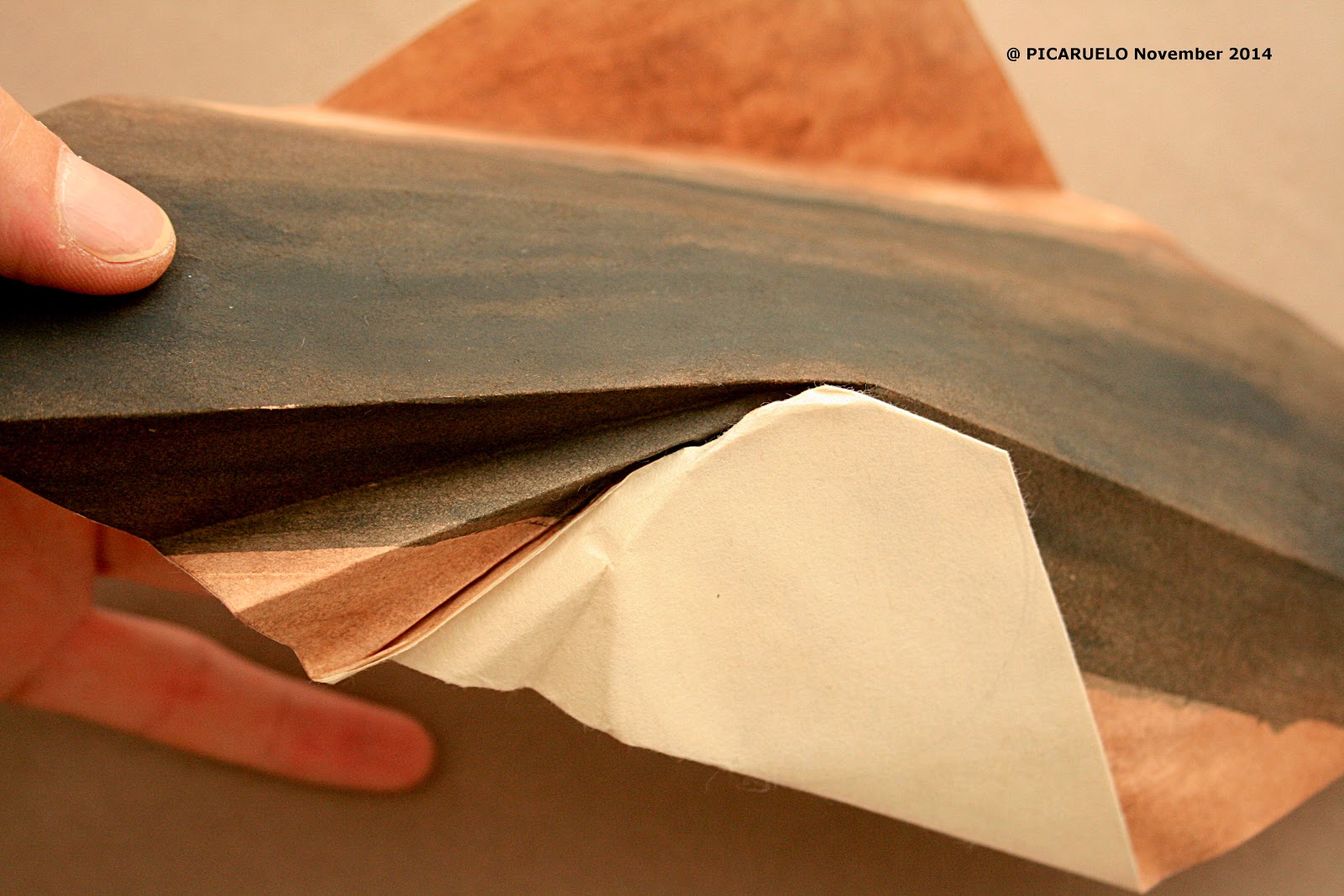When I started to think about an origami model I though about a big drum with big drumsticks and a strong dwarf to hold it. Looking for origami drums on the Internet I found some things but they where almost always models with straight lines: hexagons, octagons. I wanted to make a realistic drum: a cylinder. It was a challenge because folding straight lines is relatively simple, with curves it is more difficult but with perfect circles it seems really complex.
Taking a look at Joisel's own model did not really help me. Here is his model in the Zaragoza Exhibition in 2013:
Thinking about the problem, one day I came up with a simple solution that resolves both the cylinder problem and the colour change problem. In my model I have not folded the outer edge of the drum as in Joisel's model but it is not difficult to do it.
This is my drum's CP:
The central stripe makes the body of the drum (one colour) and the 4 circles the two bases of the cylinder. There are two circles on each side to make the colour change (the outside one is folded over the inside one). The oblique lines allow the body to fold around the circular bases. The more oblique lines there are, the more perfectly circular the bases will be.
Let us see the folding process:
 |
| Here you can see the coloured side. I only painted the centre as it is the only part that is visible in the final model. |
 |
| Both sides are folded until they touch the edge of the body |
 |
| The body is folded around the circles |
 |
| Inside of the drum |
Closing the drum completely requires to introduce one of the sides of the body inside the other. It has to be done with care so that the model does not collapse.
The drumsticks are very simple. In the following pic I include a simple diagram on how to fold them. It is just one fold and some rolling:
My drum's design does not include the edge that appears in Joisel's model. It is nothing more than adding a little stripe of paper around each side of the body and following the same folding process.
I do not want to finish without doing same numbers to calculate the shape and size of the drum so that selecting its height or diameter we can calculate the other dimension.
The equation (1) shows the relation between the side L of the square, the radius R of the circle and the height h of the cylinder. By knowing one we can calculate the other. This equation gives us the maximum diameter or height from a known height or diameter. If we do not circumscribe the outer circle to the square we can get a smaller circle.
In my case I have used a square with a side L=20cm, a known height h=4cm to obtain a diameter of the circle D=2R=4,3cm.
As you can also see in the drawing it is always verified that the length of the body is always longer than the length of the circle. It means that no matter the size of the circle, the body is always going to be long enough to cover it.










No comments:
Post a Comment